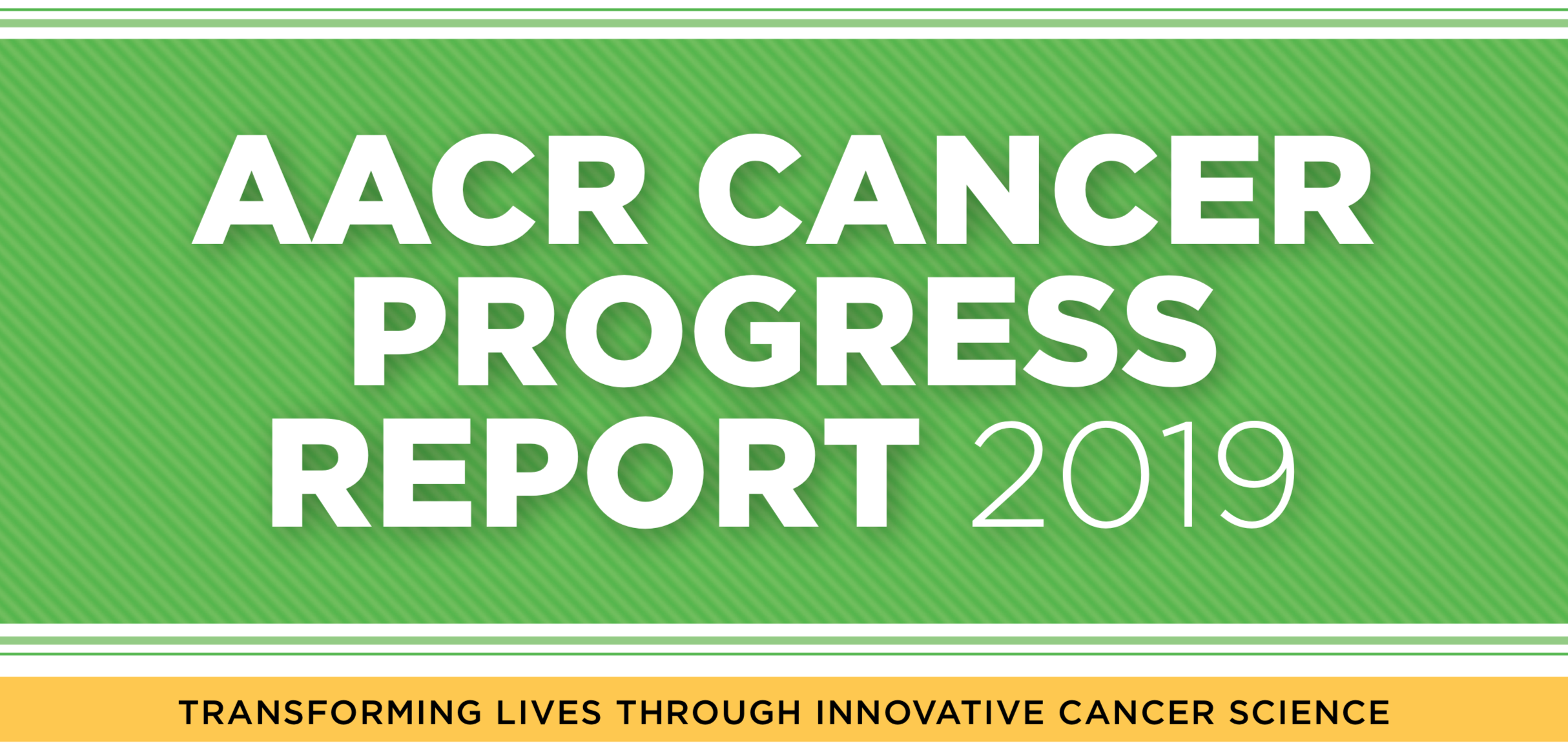ANNUAL CANCER PROGRESS REPORT ISSUED BY THE AMERICAN ASSOCIATION FOR CANCER RESEARCH
This September, the American Association for Cancer Research (AACR) released its annual Cancer Progress Report, which highlights advances over the past year in the prevention, detection, diagnosis, and treatment of cancer.
The key advances include:
- In the United States, the overall cancer death rate is decreasing, and the number of cancer survivors is increasing: 16.9 million cancer survivors in 2019 compared to 3 million in 1971; this number is projected to rise to 22.1 million by 2030.
- Between August 1, 2018, and July 31, 2019, 17 new anticancer therapeutics were approved by the U.S. Food and Drug Administration (FDA), and the uses of 10 previously approved anticancer therapeutics were expanded to include additional types of cancer.
- Immunotherapy advances led to the first therapeutic approved by the FDA for treating patients with advanced cutaneous squamous cell carcinoma; the first approval of a checkpoint inhibitor for treating patients with breast cancer; expansion of four previously approved checkpoint inhibitors for treating new types of cancer, including esophageal, kidney, liver, and lung cancers.
- Precision medicine advances include the first therapeutic to target NTRK, which is providing new hope to patients with a wide array of cancer types with a specific gene alteration; the first CD22-targeted cytotoxin for treating patients with hairy cell leukemia; the first therapeutic to target FGFR, which is benefiting patients with bladder cancer.
Prevention is one of the largest tasks in cancer control. Thanks to decades of research, several factors that increase a person’s risk of developing and/or dying from cancer have been identified, including cigarette smoking, excess body weight, unhealthy diet, exposure to ultraviolet radiation, and infection with certain pathogens. In fact, 40 percent of the cancer cases diagnosed in the United States in 2014 were caused by potentially modifiable risk factors.
- Not using tobacco is the single best way a person can prevent cancer from developing – smoking tobacco increases an individual’s risk of developing not only lung cancer but also 17 other types of cancer; the use of other combustible tobacco products (for example, cigars), smokeless tobacco products (for example, chewing tobacco and snuff), and waterpipes (hookahs) is also associated with adverse health outcomes including cancer.
- Nearly 20 percent of U.S. cancer diagnoses are related to excess body weight, alcohol intake, poor diet, and physical inactivity.
- Many cases of skin cancer could be prevented by protecting the skin from ultraviolet radiation from the sun and indoor tanning devices.
- Nearly all cases of cervical cancer could be prevented by HPV vaccination, but 49 percent of U.S. adolescents have not received the recommended doses of the vaccine.
Research that increases our understanding of the specific characteristics of cancer is continuing to promote advances in cancer treatment. These advances are being made across all five pillars of cancer care: surgery, radiation, cytotoxic chemotherapy, molecularly targeted therapy, and immunotherapy.
Clinical trials are an important part of cancer research translating its advances into clinical practice. It is estimated that the proportion of people with cancer who participate in a clinical trial varies by age: it is about 60% among children younger than 15; <2% among adolescents and young adults (ages 15 to 39); and <5% among adults older than 39.
Despite the huge progress, cancer is still a leading cause of morbidity and mortality around the world, accounting for about 16 percent
of deaths worldwide.
One of the current challenges is that progress against cancer has not been uniform for all cancer types or for all stages of cancer. For example, the overall 5-year relative survival rates of 90 percent for women with breast cancer and 98 percent for men with prostate cancer stand in stark contrast to the overall 5-year relative survival rates of 18 percent for people with liver cancer and 19 percent for those with lung cancer. Another challenge posed by the growing population of cancer survivors is that most of these people have poorer health and quality of life than other individuals of a similar age. For example, one study found that individuals who have been successfully treated for childhood cancer have experienced an average of 17 chronic health conditions by age 50, five of which were serious or disabling, life-threatening, or fatal. In comparison, individuals in the general population have experienced an average of 9 chronic health conditions by the same age, only two of which are serious or disabling, life-threatening, or fatal.
Looking into the future, the following technologies have been identified that advance cancer science and help shape the future of patient care:
- Single-cell technologies that help researchers understand the biological role of each type of cell in a tumor;
- Gene editing that can help researchers add in a specific mutation of interest, and then study the functional outcomes of the mutation and its impact on biology, as well as use gene editing for cancer immunotherapy with CAR-T cells;
- Liquid biopsies (using blood or another biofluid sample, rather than a traditional tissue biopsy, to identify the molecular alterations associated with a patient’s cancer) improve cancer screening, early detection, and monitoring of treatment response – in May 2019, the FDA approved the second liquid biopsy companion diagnostic test which detects PIK3CA mutations in individuals with HER2-negative, advanced or metastatic breast cancer;
- Big data helps achieve the full potential of canceromics research – for example, physicians may be able to match existing FDA-approved molecularly targeted therapeutics to novel cancer types, as well as identify subgroups of patients who are most or least likely to benefit from aggressive therapies;
- Artificial intelligence could help streamline imaging and pathomorphological diagnosis, as well as potentially assist in physician’s decision-making among various treatment choices;
- Development of rational treatment combinations of therapeutics based on the understanding of cancer initiation, progression, resistance, and/or recurrence, predominantly to address challenges of tumor resistance to initial treatments;
- Digital health technologies are widely studied and used to enhance efficiency in clinical trials, symptoms monitoring to improve treatment outcomes, promote healthy behavior among cancer survivors, and evaluate new models of care delivery;
- Ongoing developments in radiation therapy which has vital roles in the curative and palliative treatment of patients with many types of cancer.
To conclude, the report states that “research is the backbone of progress against cancer because it is the driving force behind every clinical advance that improves survival and quality of life, and every new policy designed to advance public health”.
Source: cancerprogressreport.org [Internet].

